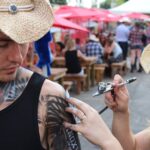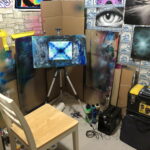Airbrushing is a painting method which creates a stream of air and paint to create various spray patterns. An airbrush is an air operated tool used to spray paint, ink, dye, enamels, etc. It can be used to spray acrylics on plastic, watercolors on paper, and makeup on skin. When the airbrush is connected to an air compressor, it breaks the liquid into a very fine mist. This process is known as atomization. Since there are many different types of airbrushes, it is important to know the difference and choose the right airbrush for your application.
Before you choose your new airbrush, you should know what your project requirements are and what type of airbrush is best for that application.
If you are in a hurry and need a synopsis on what’s a great all-around airbrush that can take on any project, get a:
- dual action,
- gravity feed,
- internal mix airbrush with a
- 0.35mm tip.
A great option for this kind of airbrush is the Iwata Eclipse HP CS. Check-out this other article which explains why the Iwata Eclipse is a great choice for beginners to advanced users.
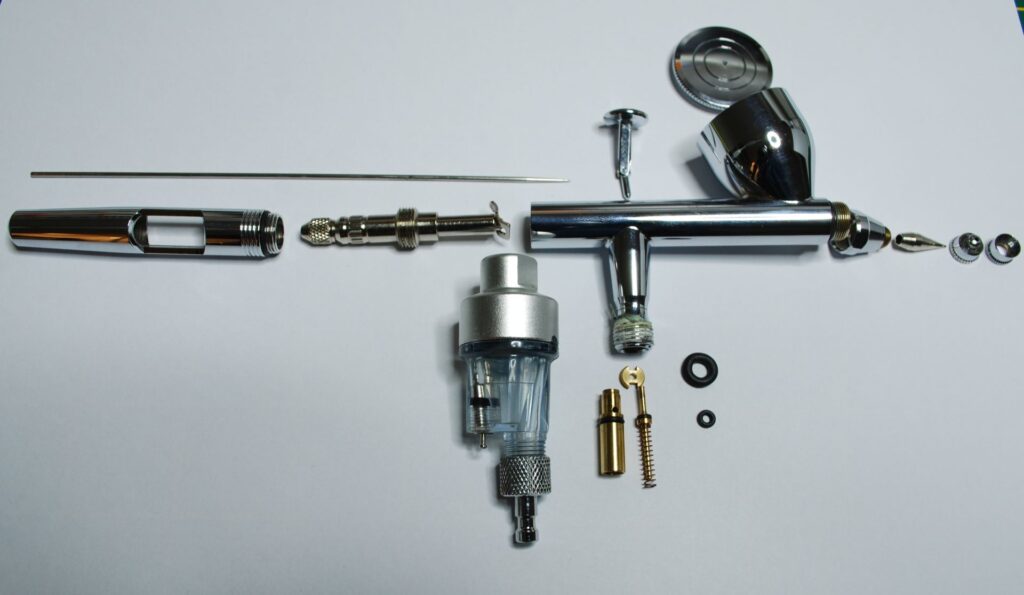
Choosing the right trigger action
The difference between the trigger action determines what kind of control you have over the paint stream.
Single Action Airbrushes
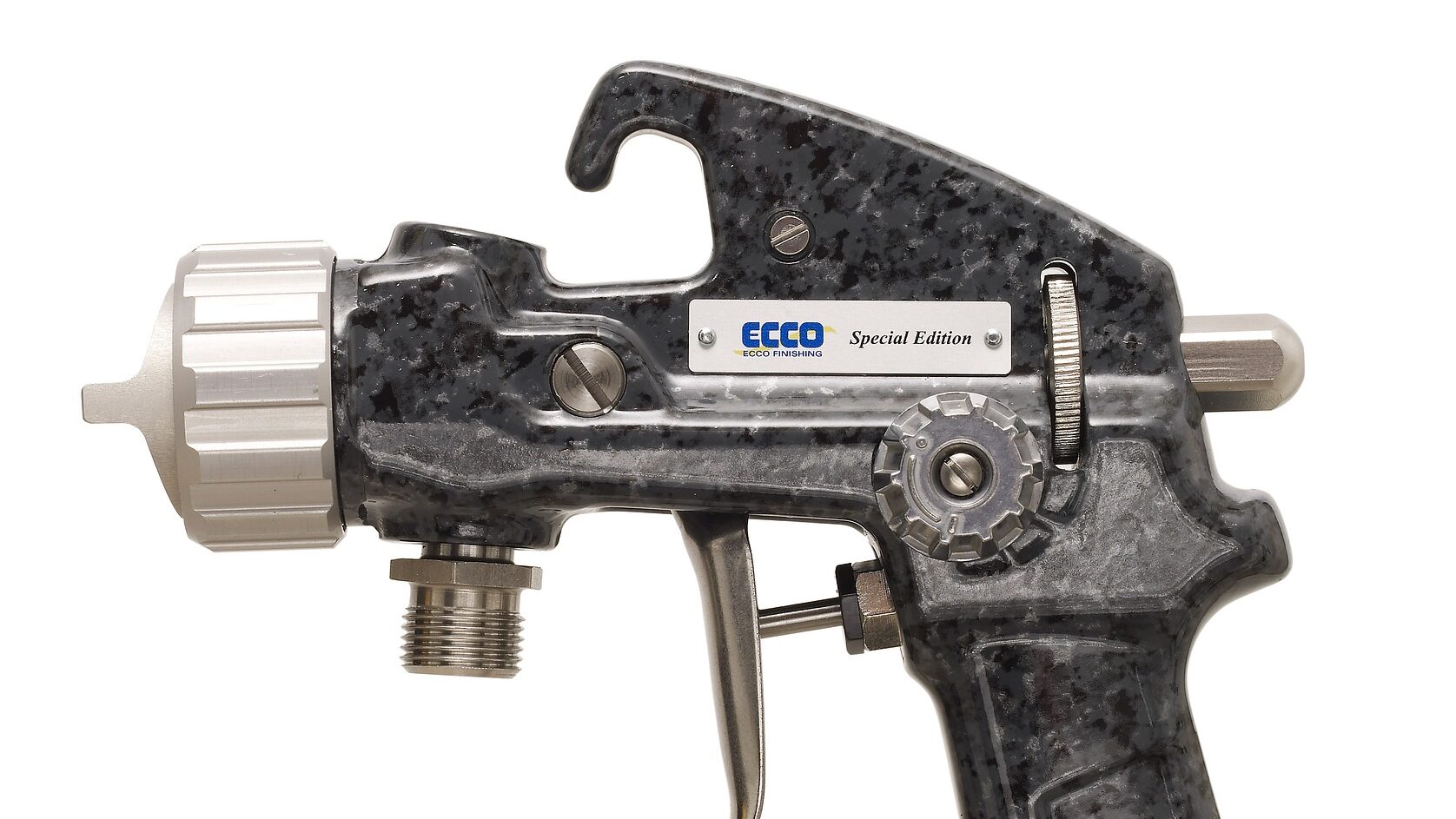
A single action airbrush sprays your paint by a simple press of a button or trigger, acting as an on/off switch. The airflow stops when you release the trigger. This makes the single action airbrush the simplest to use – it’s most like an aerosol can of spray paint as you have no control over how much paint comes out at once. A single action airbrush is best used for painting an object a solid color, but can also be used for tanning sprays or various automotive applications.
Duel Action Airbrushes
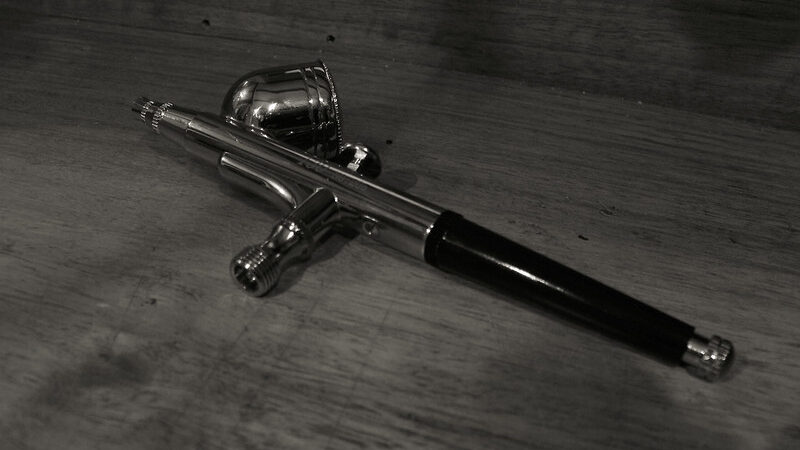
A dual action airbrush has a more complex trigger system to give you more control over the paint flow. It has a trigger that you push down to release the air and pull back to release the color – the less you pull the trigger, the less color you will get. You can get more precise work from a dual action airbrush than a single action airbrush. These are commonly used by artists and craftsmen.
Choosing the right airbrush feed system
Another option you need to take into consideration is the feeding systems. There’s gravity feed airbrushes, side feed airbrush, and siphon feed airbrushes.
Gravity Feed Airbrushes
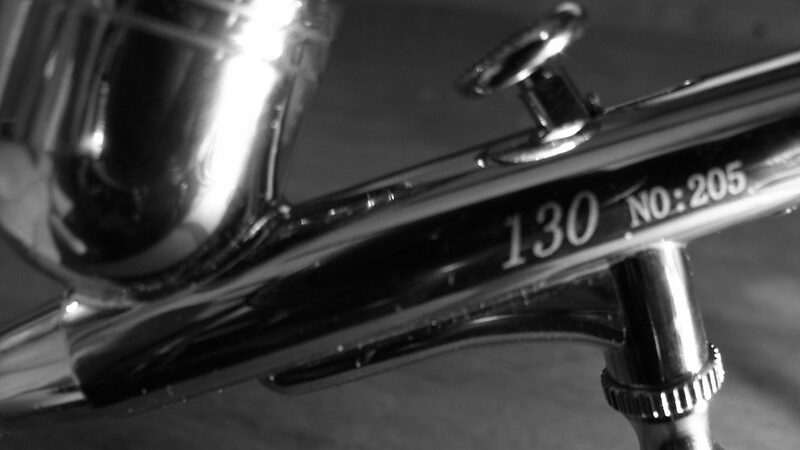
The gravity feed is best used for detail airbrushing. The gravity feed comes with a cup on the top which holds the paint. It works by using gravity to pull paint into the mixing section of the airbrush where atomization occurs. A gravity feed airbrush is the simplest design and most straightforward kind of feed system. It allows you to mix paint directly in the cup.
Side Feed Airbrushes
The side feed airbrush has a gravity fed cup, siphon cup or bottle on the side that you pour the paint into. The placement of the cup allows you more flexibility which can help when airbrushing hard to reach areas or contoured objects.
Side feed systems feed paint through the side of the airbrush. If the level of paint is above the nozzle’s tip, the paint is gravity fed into the mixing area. However, if the paint level is below the nozzle’s tip, the paint is siphon fed into the mixing area. A major advantage for a side feed airbrush is that it can be used upside down. The downsides of this system are it’s bulky design which make it unwieldy and more difficult to clean.
Siphon Feed Airbrushes

The siphon feed airbrush has a bottle or cup connected underneath the main body. Air is sucked through a tube into the mixing area where atomization occurs. Siphon feed airbrushes typically connect directly to bottles which allow you to use lots of paint. This makes it perfect for larger projects as you don’t have to stop to refill the paint supply as often.
Choosing the right kind of mixing system
Before deciding which airbrush you want to buy, you also want to consider the different kinds of mixes.
Internal Mix Airbrushes
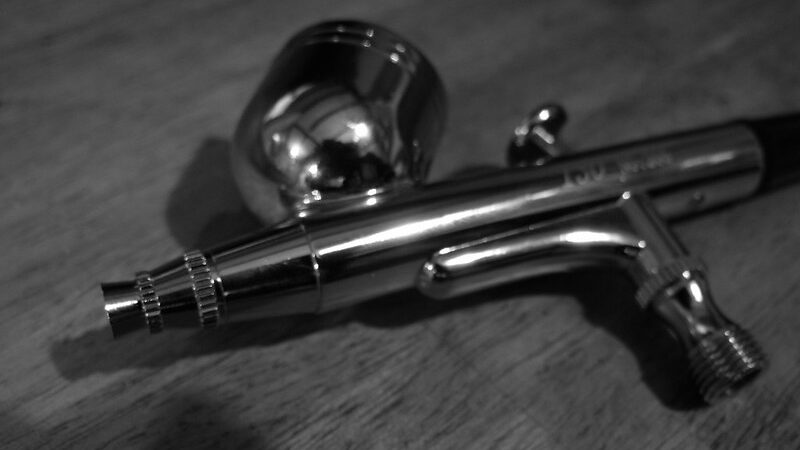
The internal mix airbrush works by breaking down the liquid into droplets inside– meaning that paint flows straight into the body through the bottle or cup. This mix system produces a finer mist of paint and a fine dot spray pattern. The internal mix is really the more common airbrush option these days. This is because it is superior for precision applications such as fine lines, color gradations, and shading.
External Mix Airbrushes
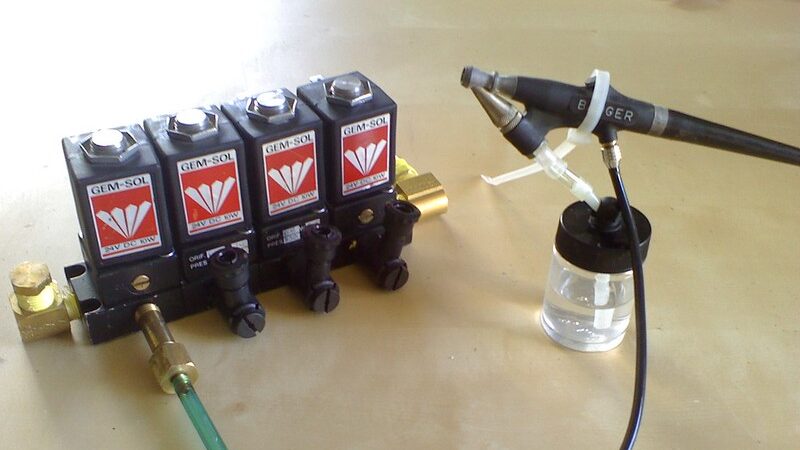
The external mix has a nozzle located on the bottom of the airbrush, releasing the air and paint before they are mixed together. This creates a larger atomization pattern and a more coarse spray pattern. The first airbrushes had an external mix and now they are almost completely replaced by the internal mix because the internal mix gives the user better control of the spray pattern. However, there are still external mix airbrushes out there so it is important to be aware of them.
Choosing your airbrush nozzle tip size
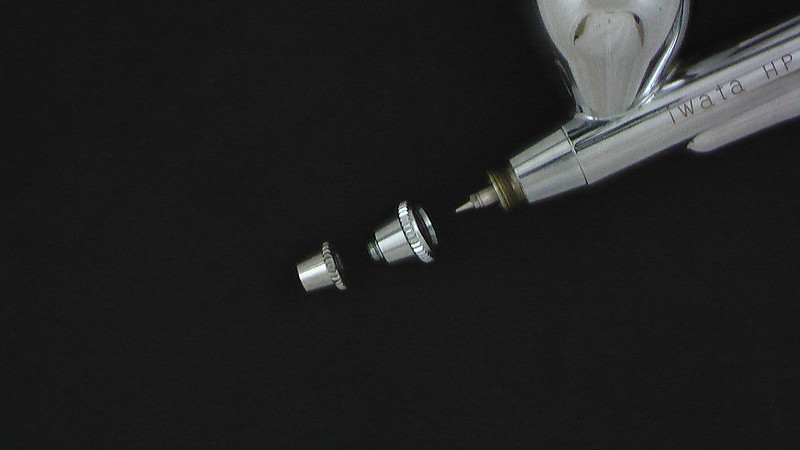
Before you make your final decision on an airbrush, you need to decide on a tip size. The size of the tip determines the quantity of paint that can be sprayed with a given air pressure. Tip sizes generally vary from 0.10mm to 0.5mm.
Generally speaking, thicker paints require a larger tip and thinner paints can be used with a smaller tip.
Because of this, people who use emulsions and metallics need a tip that is at least 0.6mm thick. Finer detail work requires a smaller tip. A medium sized tip is 0.35mm and can be used to achieve a line of 0.3mm at its finest, and 50mm at its widest.
A fine tip size is 0.2mm and a heavy tip size is 0.5mm.
A fine tip is best used for spraying thin consistency medias, such as inks, watercolors, dyes, and stains. A medium tip (0.35mm) is the most preferred and is best used for spraying thinned acrylics, lacquers, and enamels. A heavy tip is best used for higher viscosity medias, such as glazes, latex, and varnish.
When choosing the right kind of airbrush, take these different types into consideration. Whether it’s a solo or dual trigger system, gravity,side, or siphon feed system, or even an internal/external mix airbrush, make sure you get the right tool for the job.

